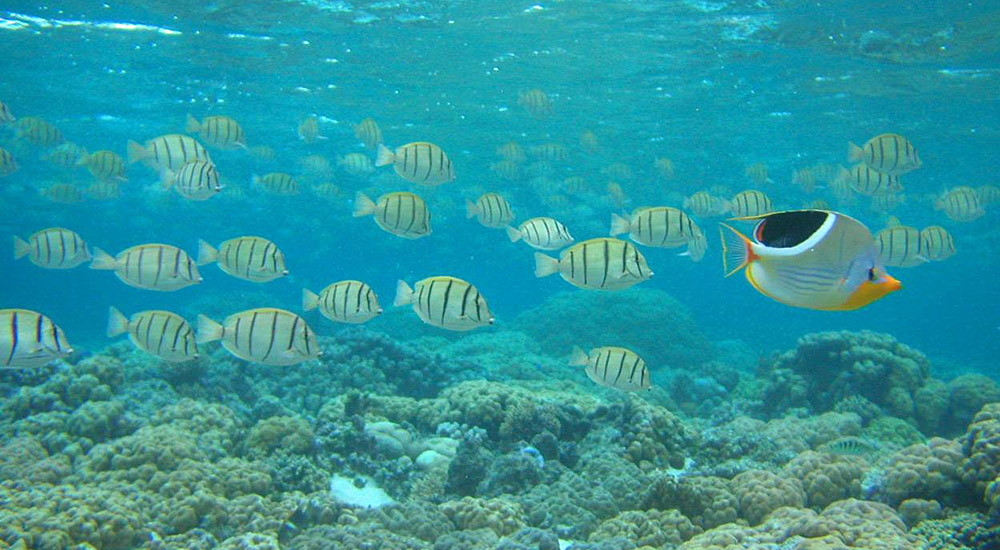Final Management Plan – 2012

A sanctuary management plan is a site-specific planning and management tool that describes the sanctuary's goals, objectives, and boundaries; guides future activities; outlines staffing and budget needs; and sets priorities and performance measures for resource protection, research, and education programs. The sanctuary's previous management plan was written during the sanctuary designation process in 1984. The 2012 management plan is the result of a management plan review that ONMS conducted from 2007 through 2012. It updates the vision, goals, and objectives of the sanctuary to better reflect the new paradigm of sanctuary management within ONMS. It also includes eight action plans that incorporate new and planned management strategies and activities designed to help achieve specific sanctuary goals, directly address current priority resource management issues, and guide sanctuary management over the next five to 10 years. Below is a list of the action plans and their primary objectives (in italics).
- Cultural heritage & community engagement action lan
To promote stewardship through active engagement of sanctuary communities while incorporating Samoan culture and protecting cultural heritage and maritime heritage resources.
- Marine conservation science action plan
To improve ecosystem-based management by providing a strong foundation of science and increasing knowledge of sanctuary marine ecosystems.
- Climate change action plan
To minimize and mitigate the impact from climate change events on coastal and marine ecosystems in sanctuary units.
- Operations and administration action plan
To outline the means and level of support necessary to successfully achieve sanctuary goals and implement the strategies and activities detailed in the other action plans.
- Ocean literacy action plan
To cultivate an informed public and enhance ocean stewardship by increasing public awareness, understanding, and appreciation of sanctuary resources in American Samoa.
- Resource protection & enforcement action plan
To reduce existing and potential resource threats and to prevent adverse impacts to the ecosystem.
- Partnerships & interagency cooperation action plan
To foster and facilitate cooperation and coordination of planning and management actions.
- Program evaluation action plan
To effectively and efficiently incorporate performance measurement into sanctuary operations in order to determine the degree to which management actions are achieving sanctuary goals.
The management plan is accompanied by an environmental impact statement that evaluates the potential environmental, cultural, and socio-economic impacts of the proposed sanctuary actions. These actions include changing the name from Fagatele Bay National Marine Sanctuary to National Marine Sanctuary of American Samoa; designating additional units to be included in the sanctuary; revising the final management plan; and implementing new sanctuary action plans.
Development of the 2012 management plan
ONMS and sanctuary managers developed this management plan through a public process, detailed in the management plan and summarized here (see also our "Management Plan Review" page). Public involvement began in 2007-2008 with outreach about the management plan review process through distribution of informational fact sheets and reports, newspaper articles, radio spots, and interviews on radio and TV talk shows.
In 2009, sanctuary staff conducted public scoping to solicit public comments on the status of sanctuary management and possible inclusion of additional sanctuary units. Following this period, the government of American Samoa's Office of Samoan Affairs facilitated a meeting with ONMS and all 62 village mayors to discuss the preliminary list of potential additional sanctuary units, and requested assistance from the mayors to inform village stakeholders. This was followed by a meeting with the Matai leadership team to discuss public feedback for these proposed areas. In 2010, ONMS staff used the Office of Samoan Affairs as a conduit to conduct a total of twenty-two meetings with the villages adjacent to proposed sanctuary units.
Throughout the development of the management plan, ONMS collaborated with territorial and federal resource management agencies to identify and select the proposed new sanctuary units and to foster collaborative management and maximize the efficiency of agency resources. The sanctuary advisory council and its working groups held twelve meetings during the management plan review process. Members of the advisory council, including the American Samoa Department of Marine and Wildlife Resources, the National Park of American Samoa, American Samoa Community College, and American Samoa Department of Commerce, were integral partners in the site selection process, regulatory alternatives, and action plan development. Other advisory council members, including the American Samoa Environmental Protection Agency, NOAA Fisheries, the NOAA Office of Law Enforcement, the U.S. Coast Guard, and nine nongovernmental members representing community and user group stakeholders were involved in many aspects of the management plan review.
The draft management plan and draft environmental impact statement were made available to the public on October 21, 2011. The original public comment period lasted 78 days, closing on January 6, 2012. In response to feedback from the advisory council and members of the public, and to honor a request from Congressman Faleomavaega Eni Hunkin, NOAA re-opened the public comment period for an additional 45 days beginning January 25, 2012 and closing March 9, 2012.
During the extended comment period, NOAA solicited additional public comments through six village meetings. In addition to input from these meetings, a total of 314 individual comments were submitted during this time. A number of changes have been made in the final management plan and rule based on the public comment NOAA received on the draft during the 123-day public comment period. A summary of the comments and NOAA's responses are provided in Appendix A of the combined final management plan/final environmental impact statement.

